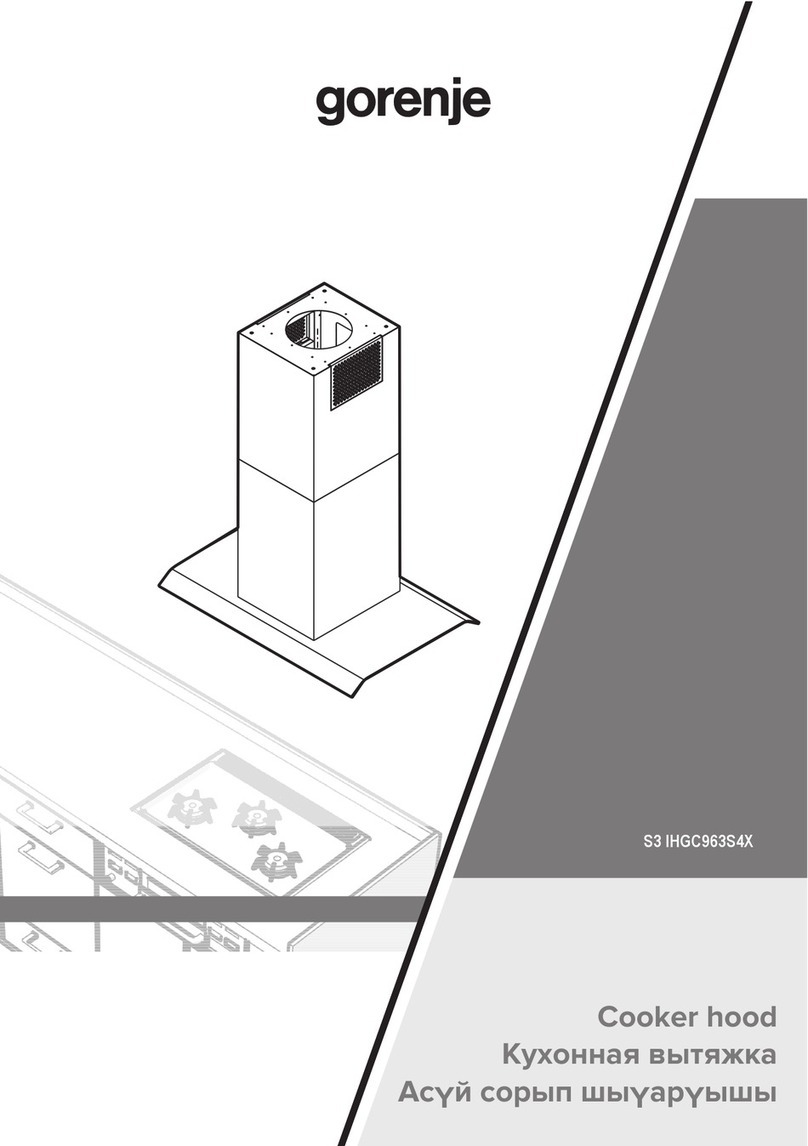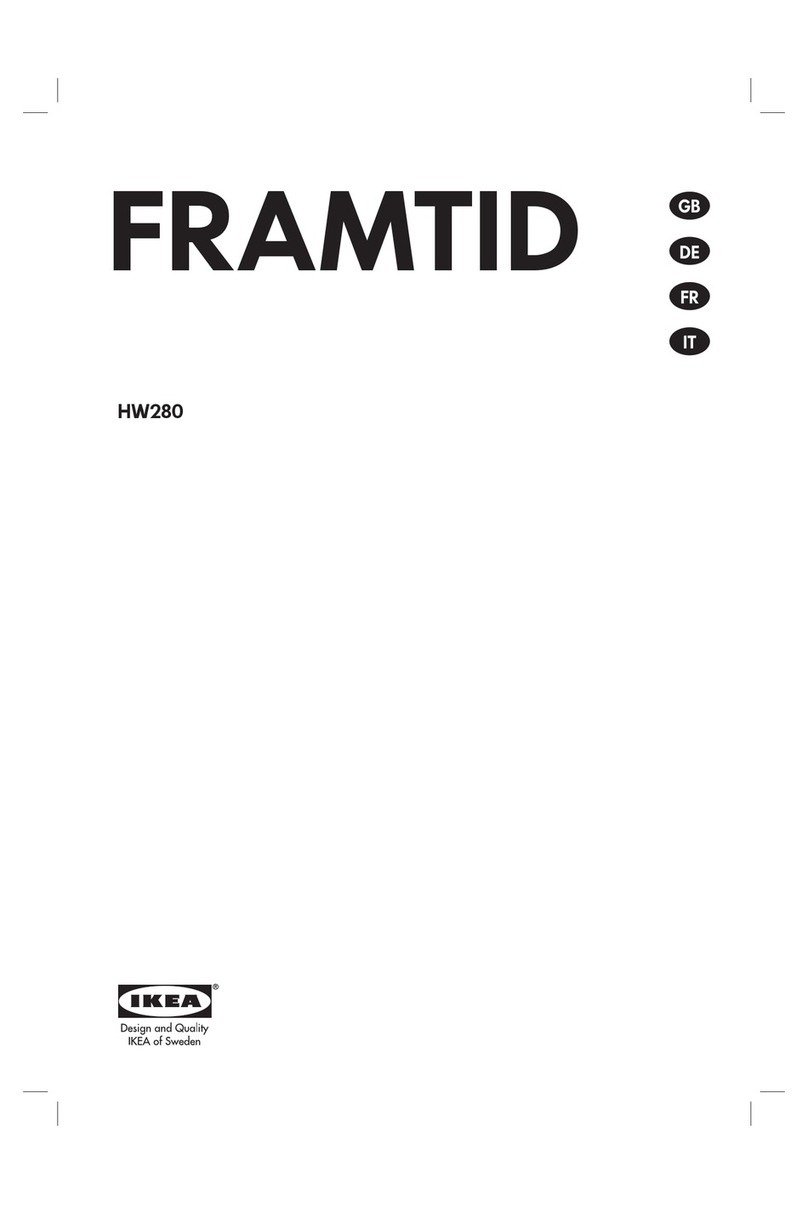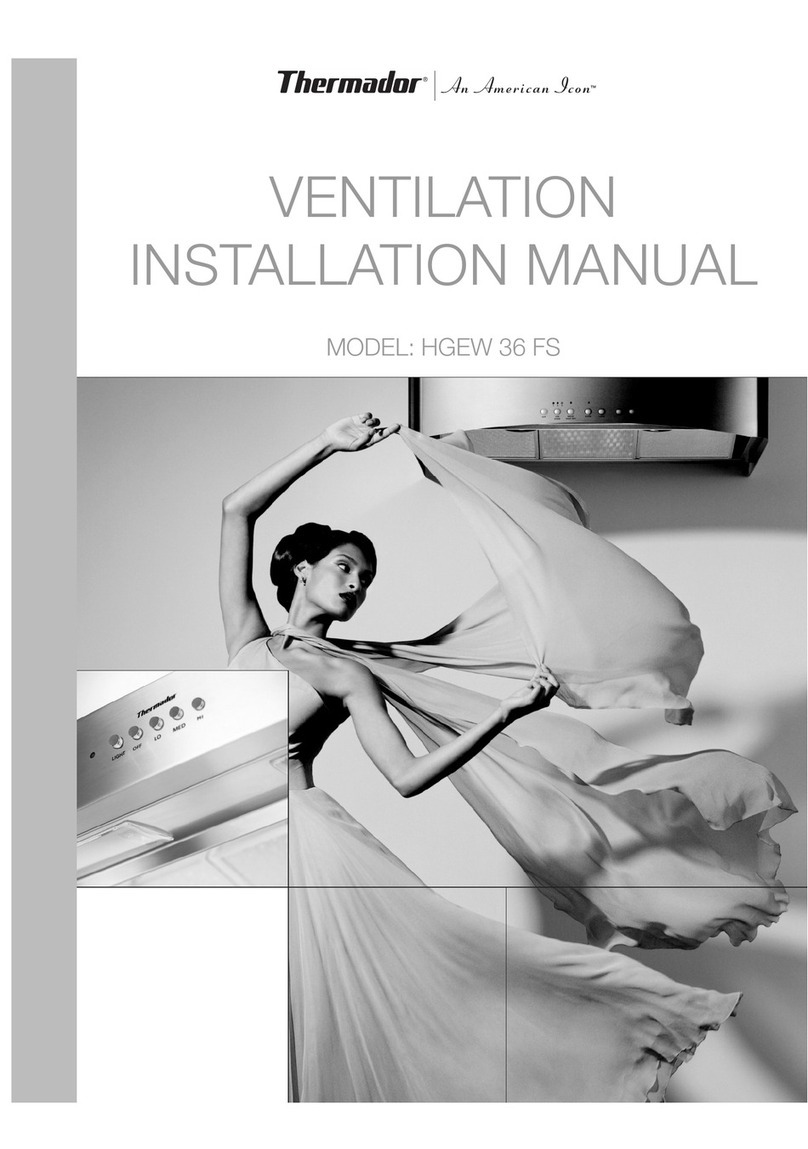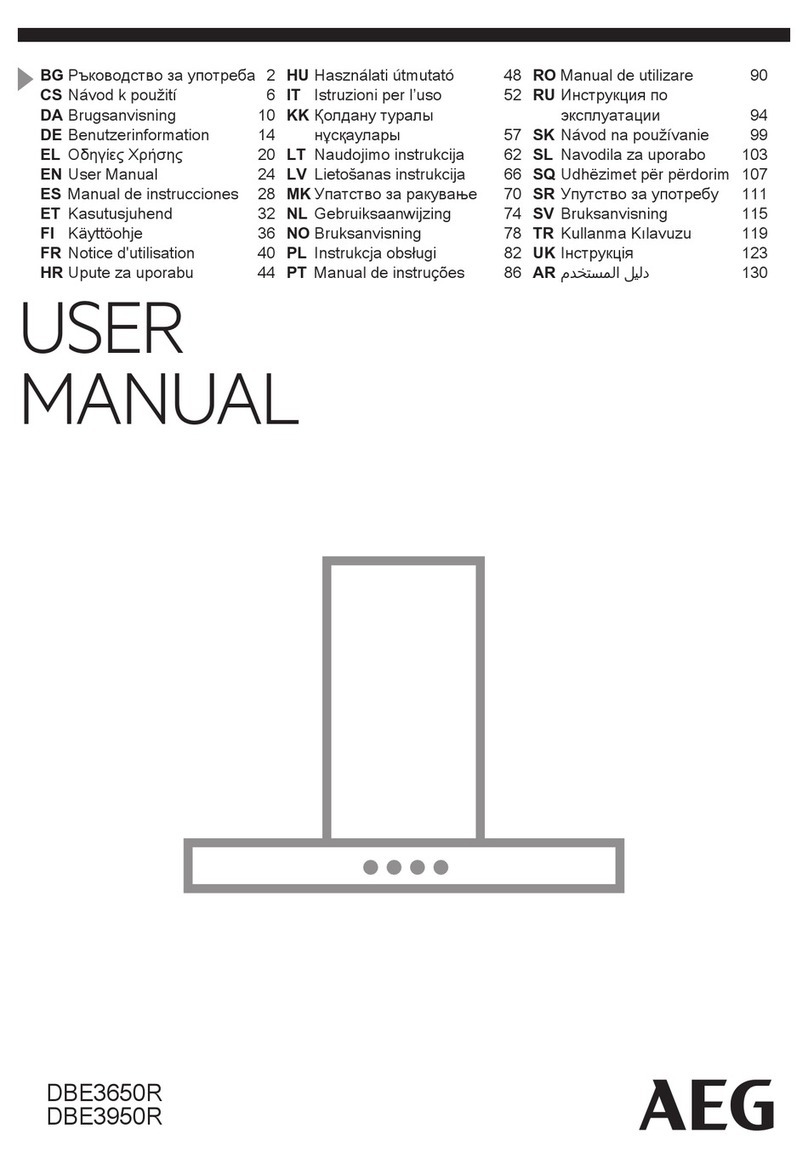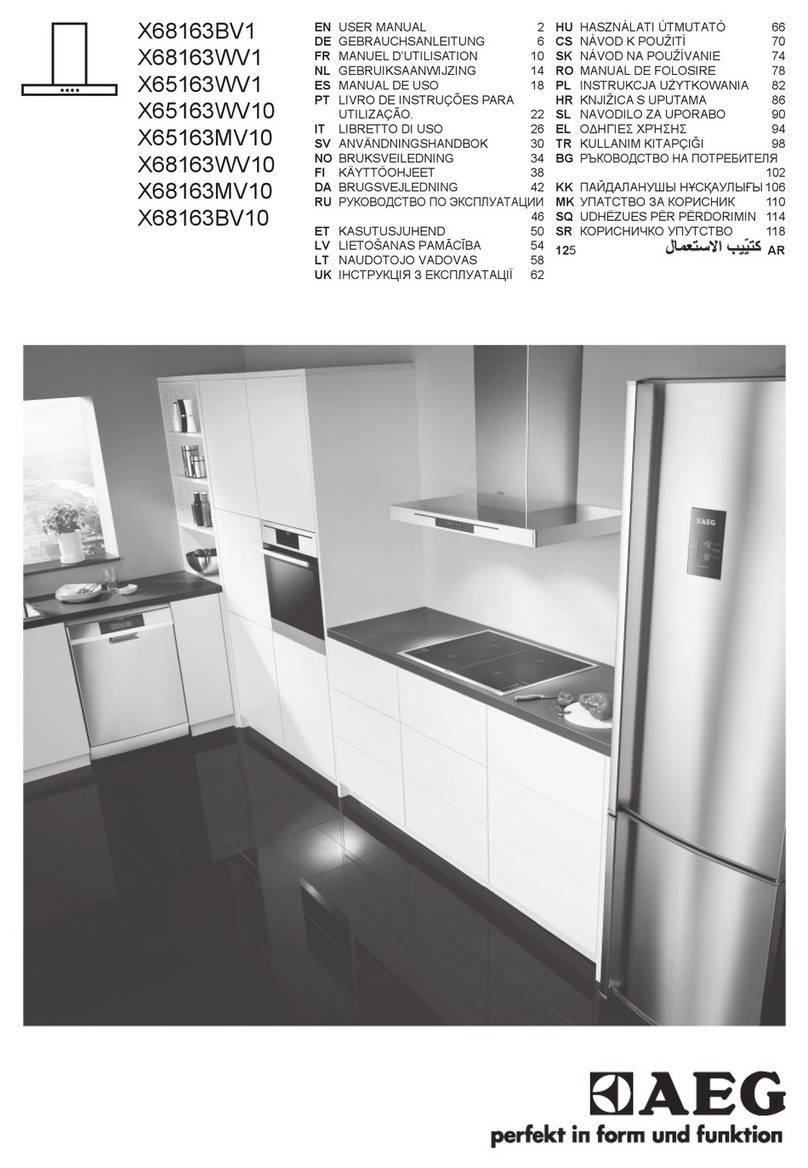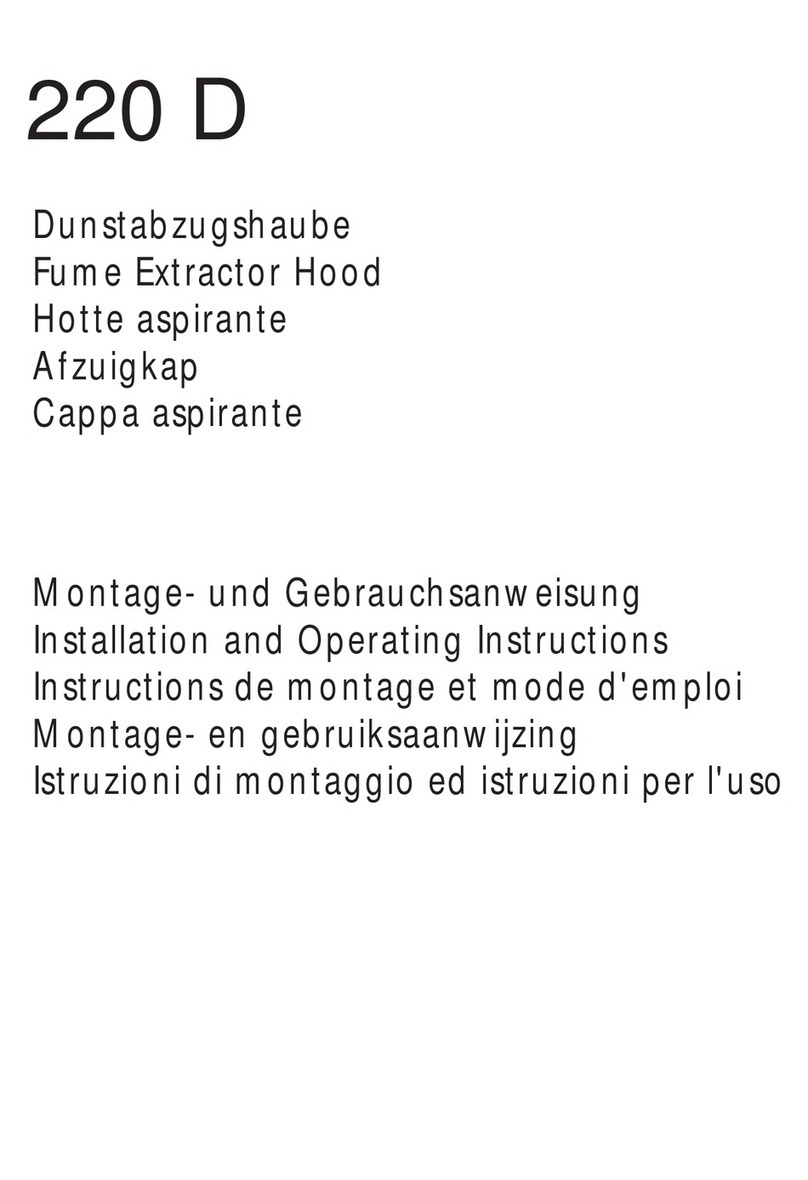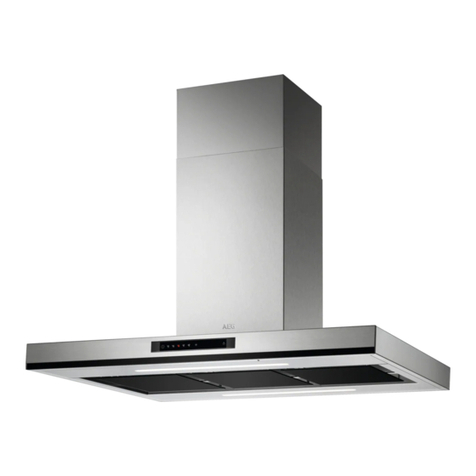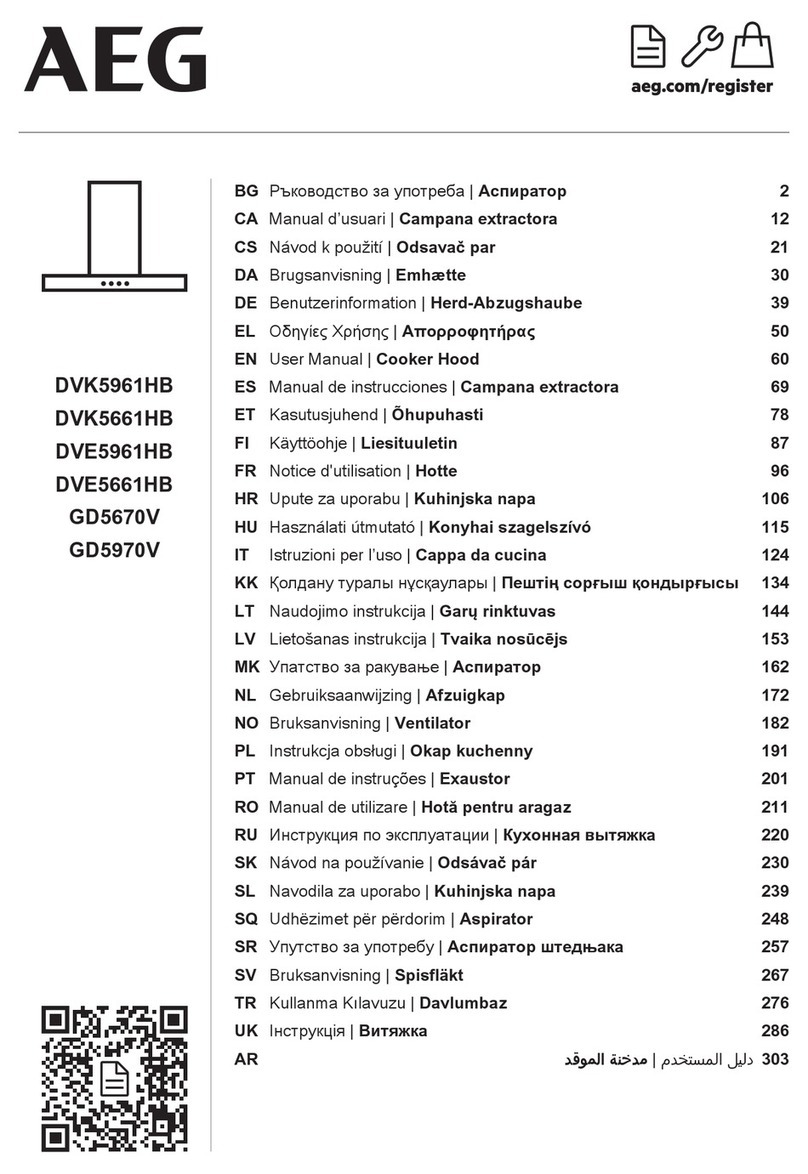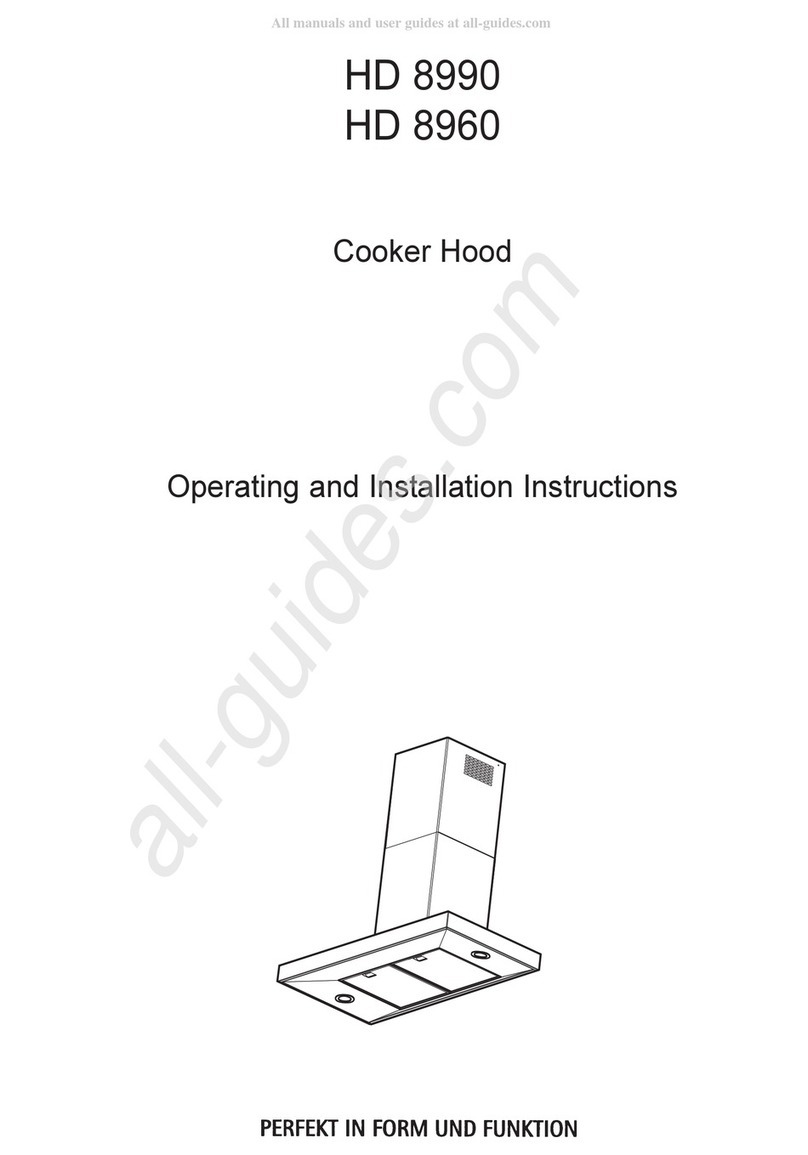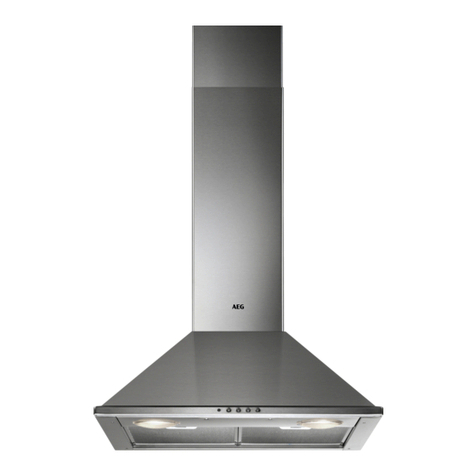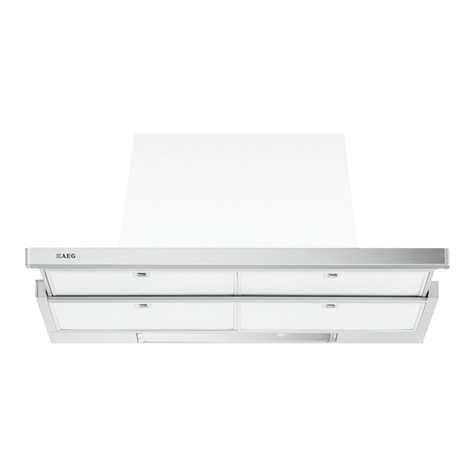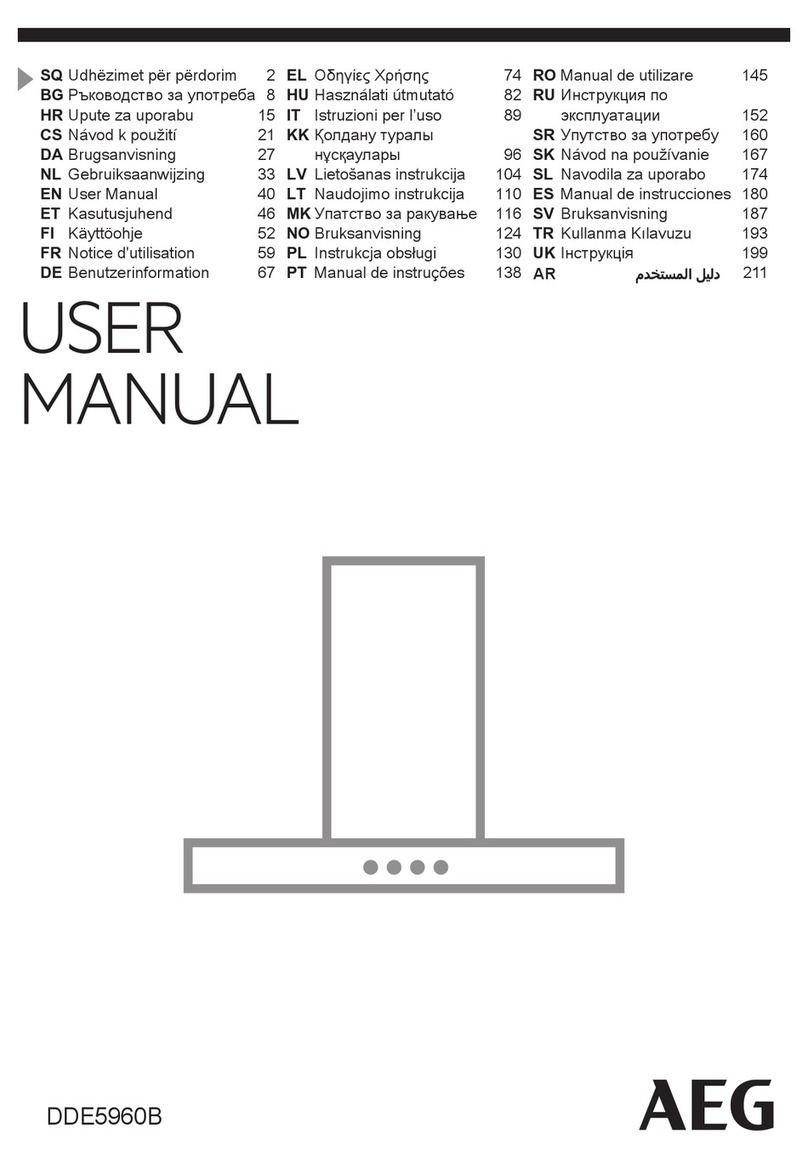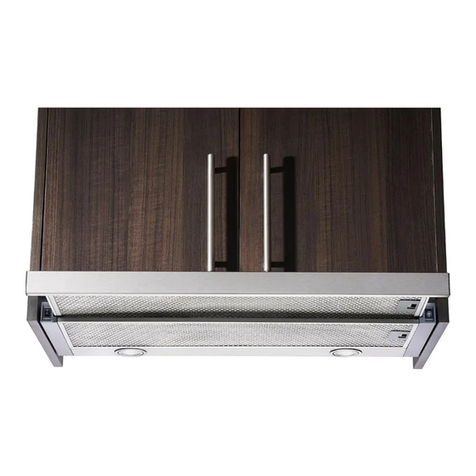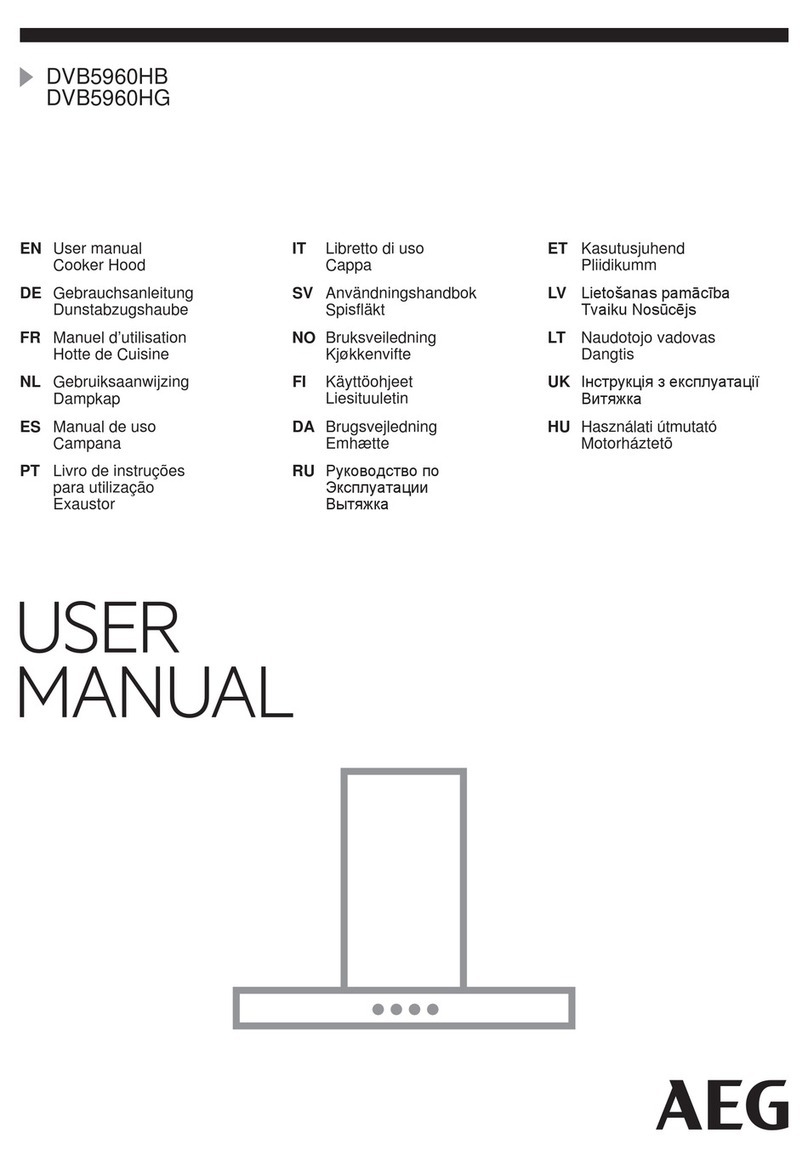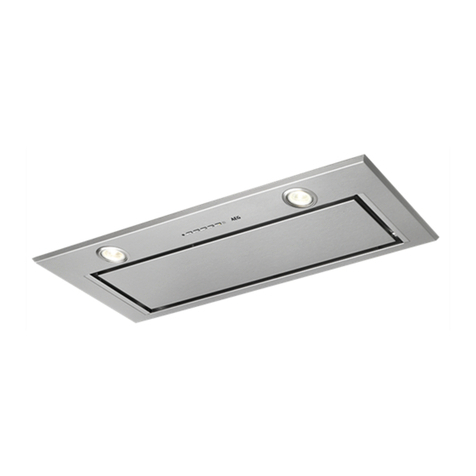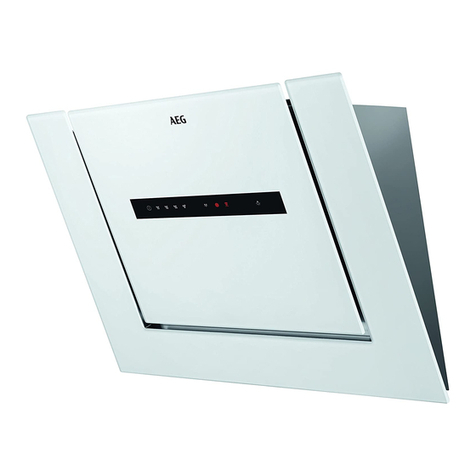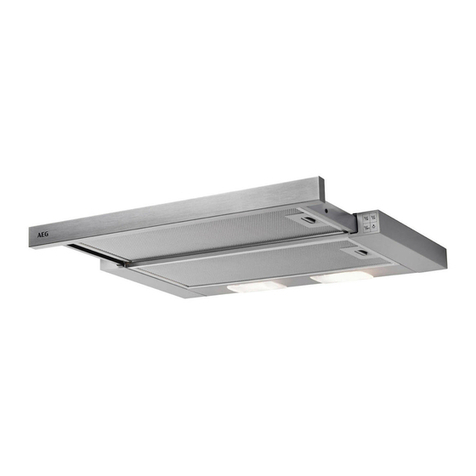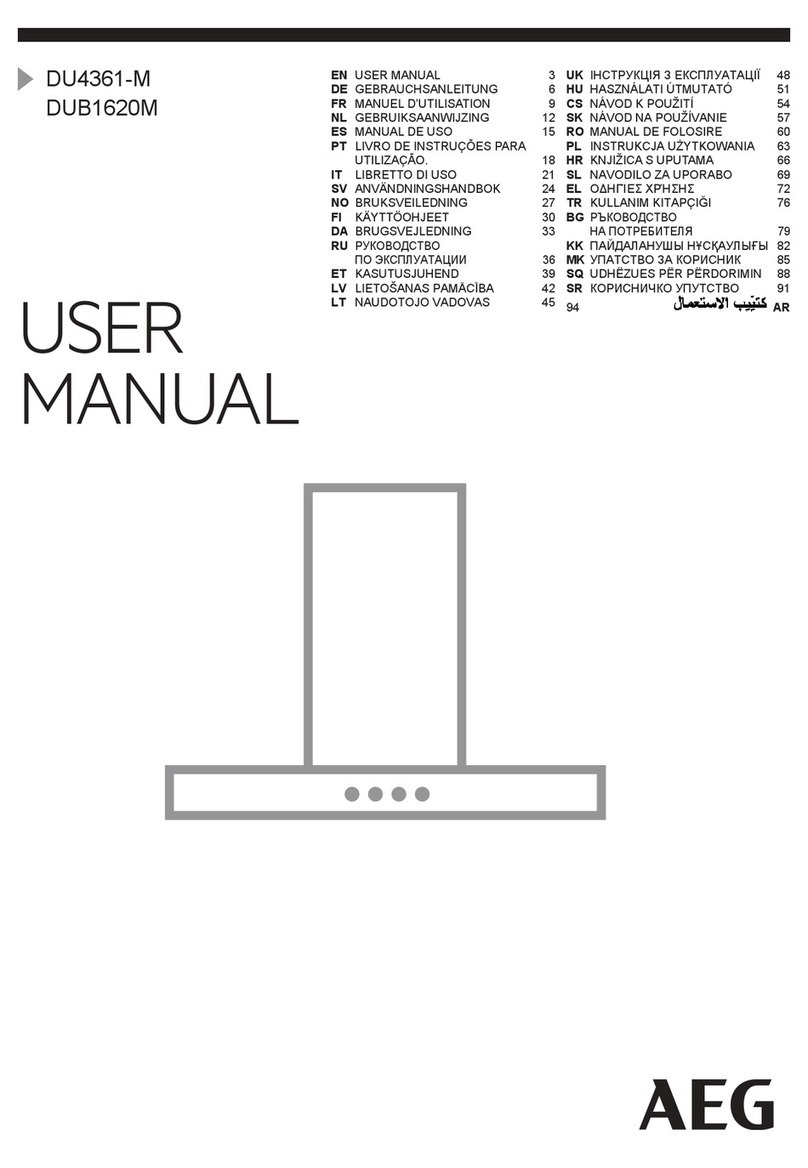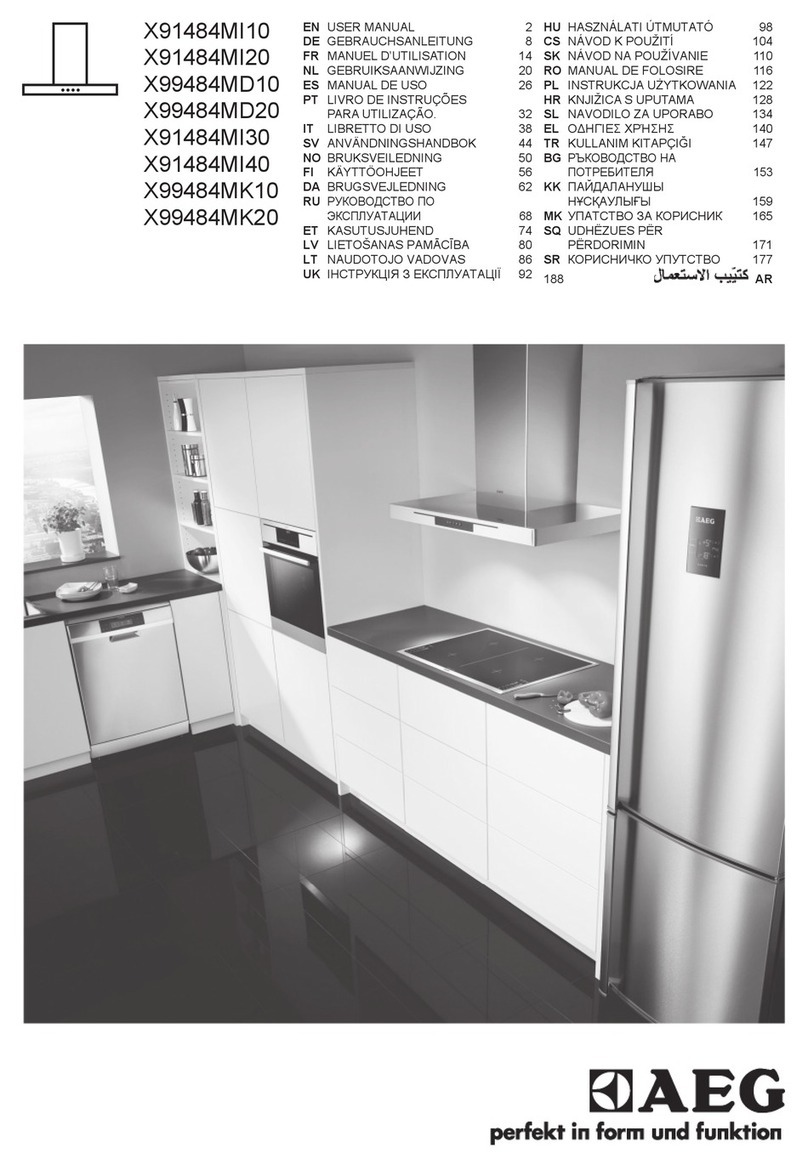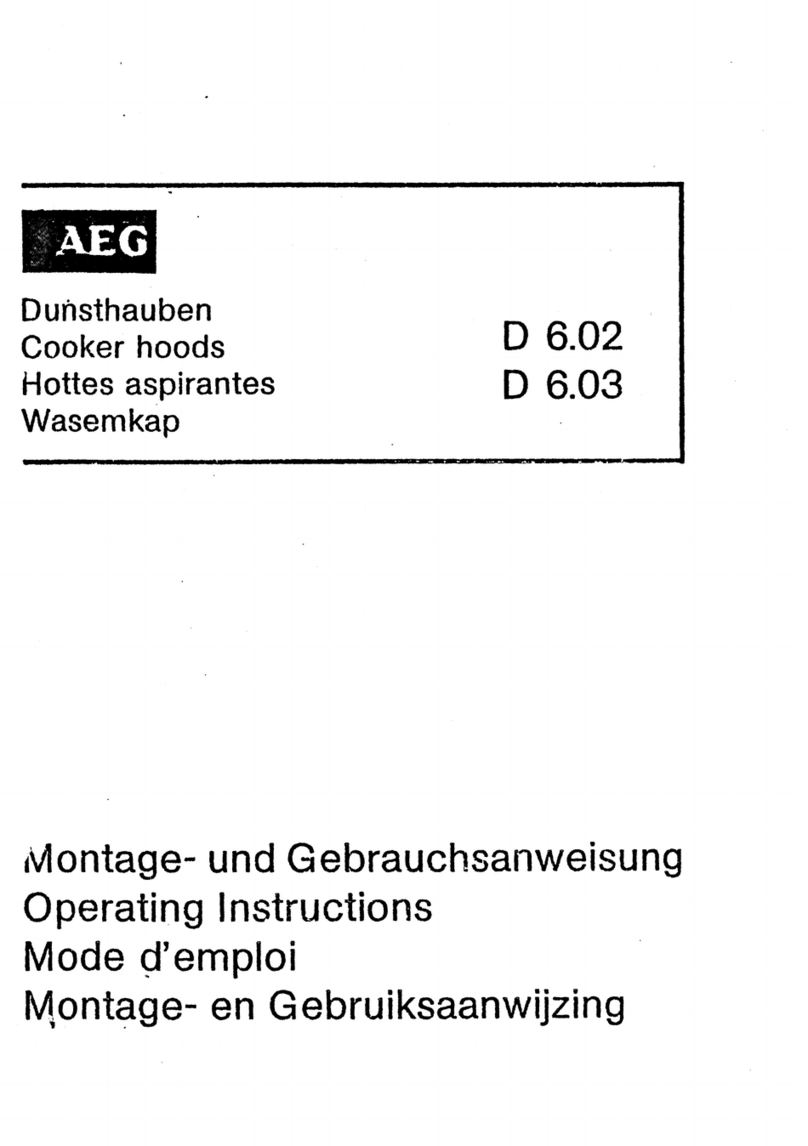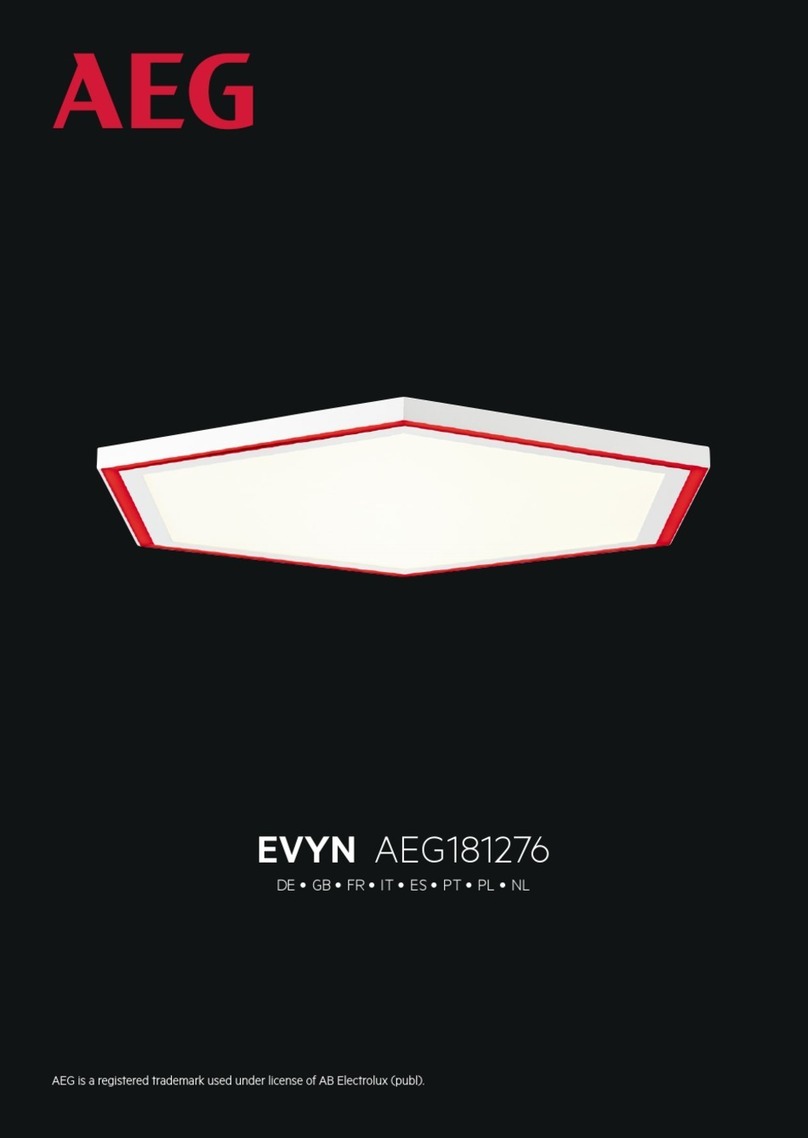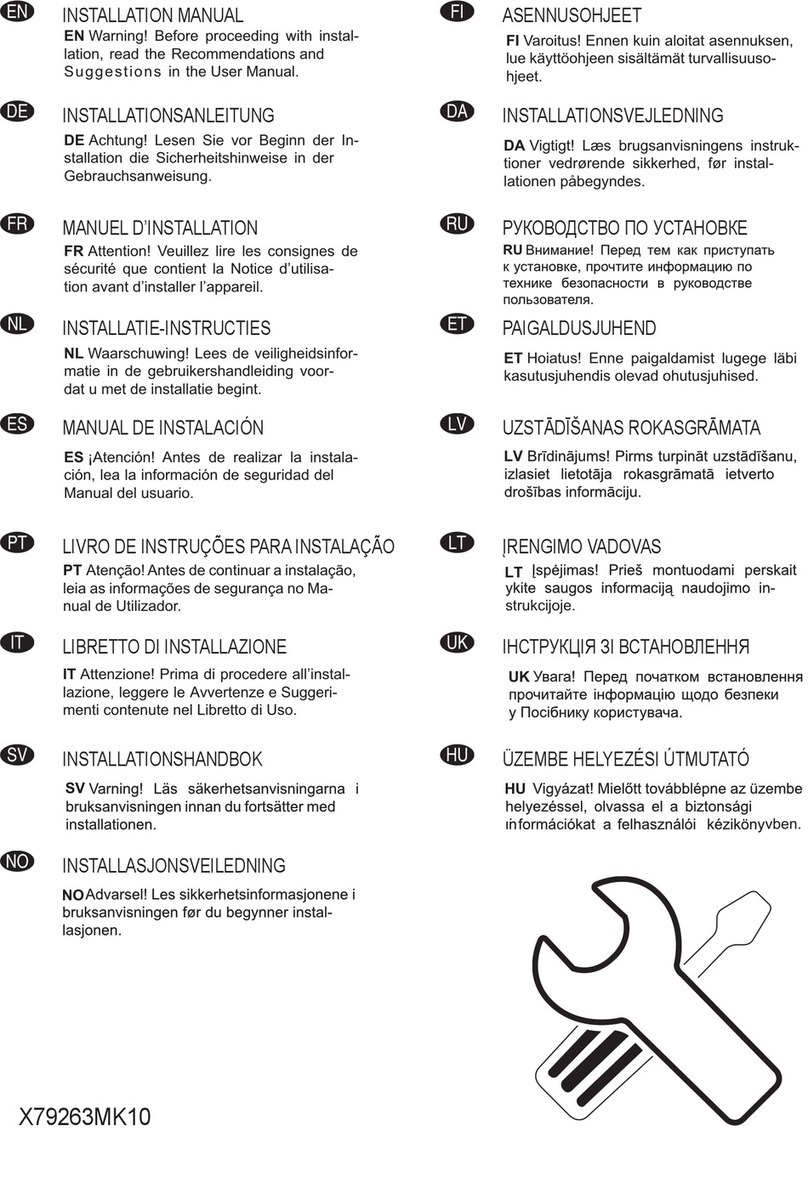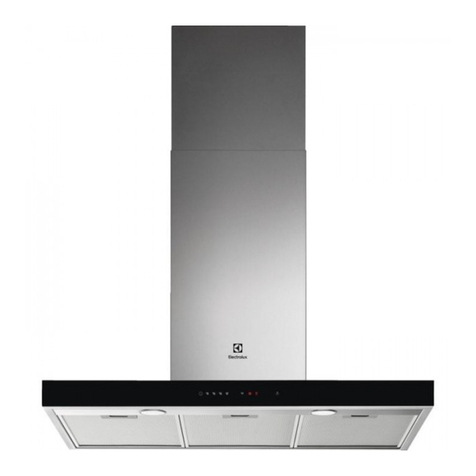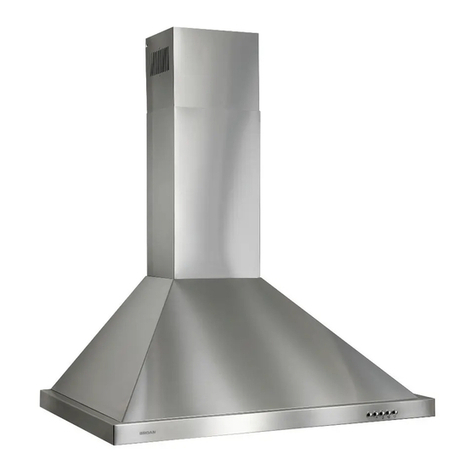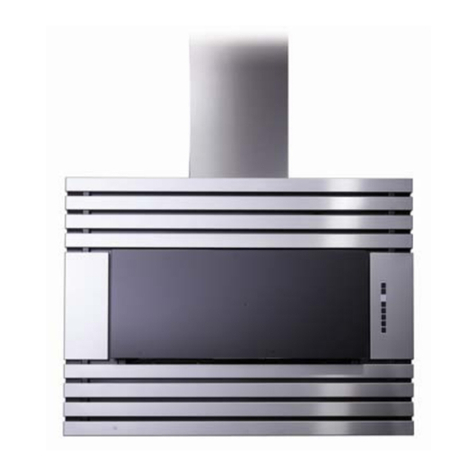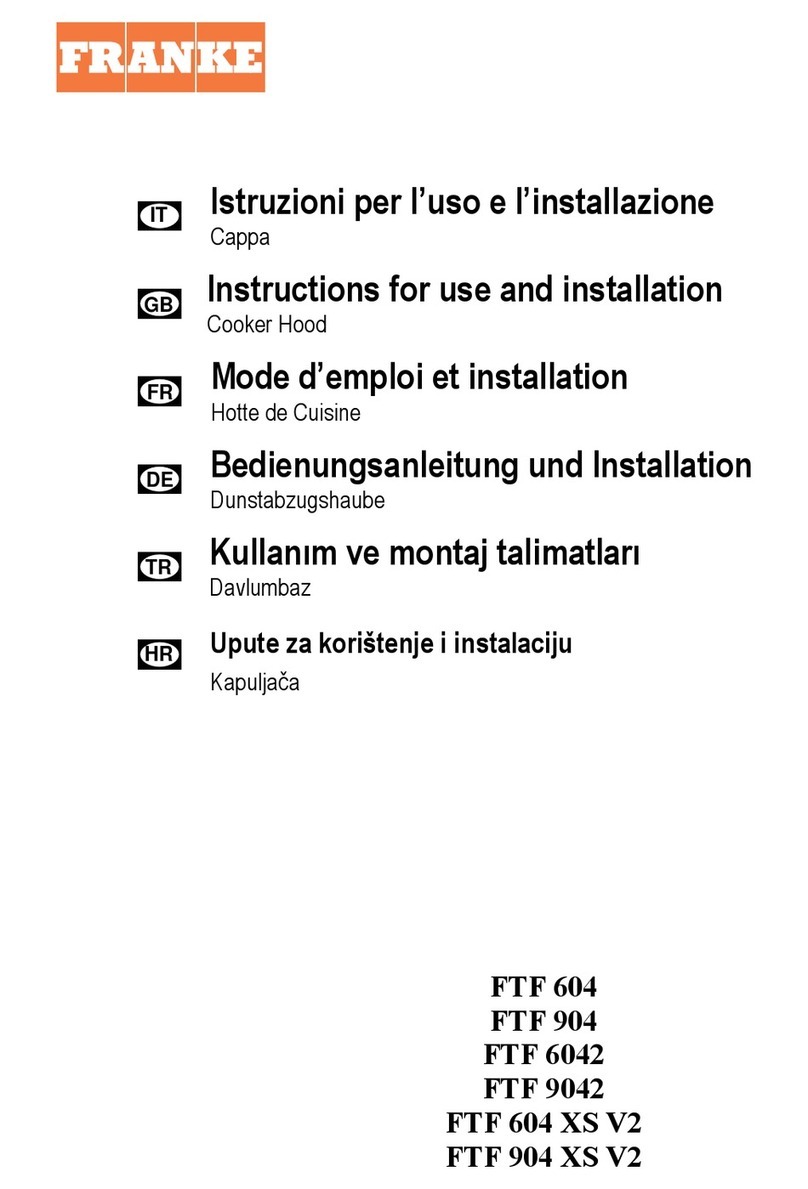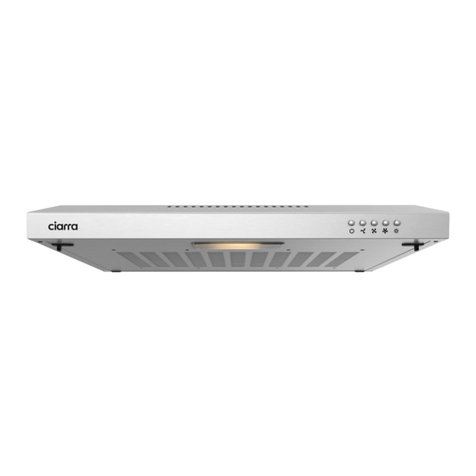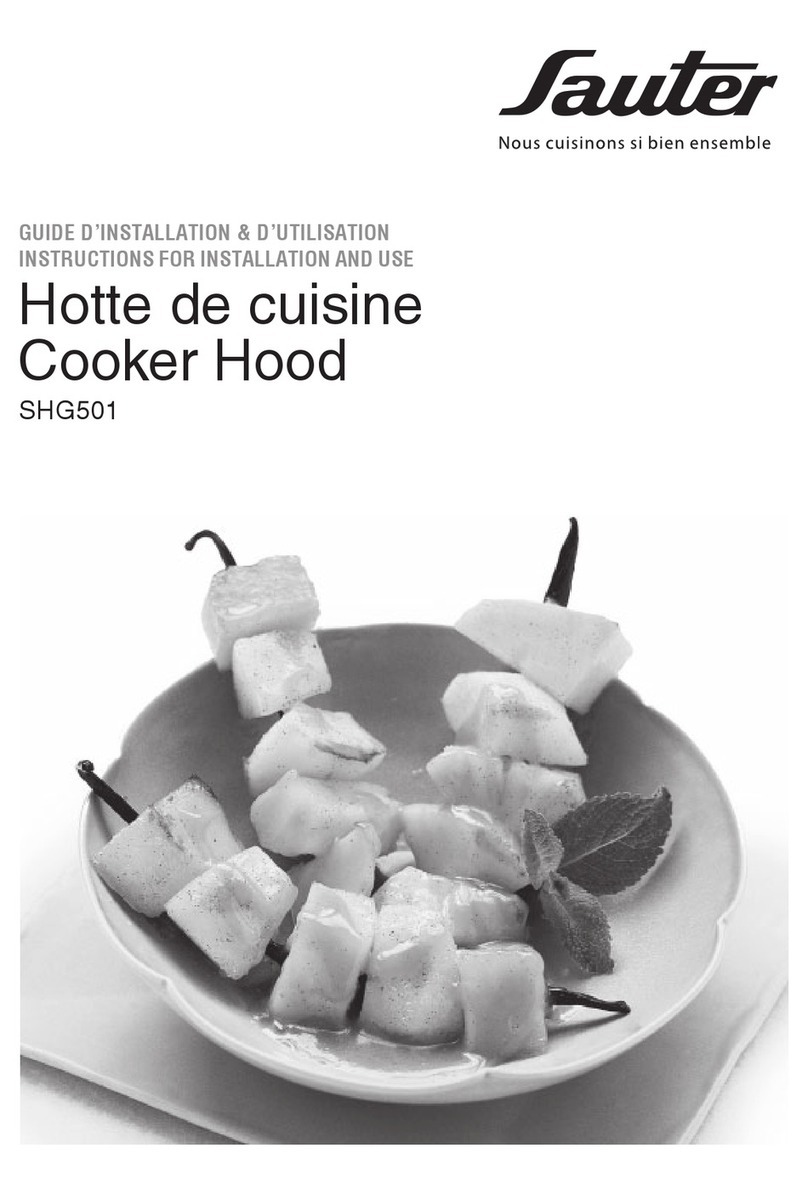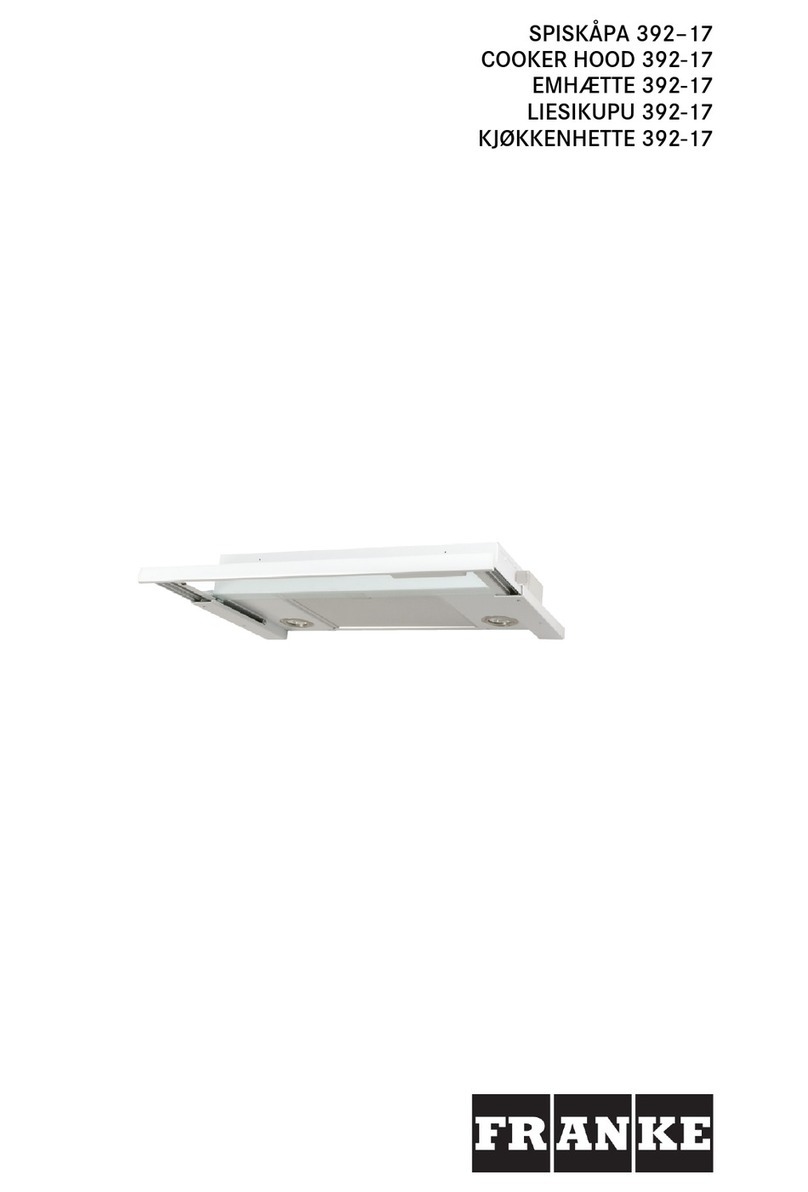62
Safety warnings
for the user
•Alwayscoverlighted elements, to prevent excessheatfrom
damaging the appliance. In the case of oil, gas and coal fired
cookers it is essential to avoid open flames.
•Also, when frying, keep the deep frying pan on the cooker top/
cookerundercarefulcontrol.
•Thehotoil in the fryingpanmight ignite due tooverheating.
•The risk of self-ignition increases when the oil being used is dirty.
•It is extremely important to note that overheating can cause a fire.
•Never carry out any flambécooking under the hood.
•Always disconnect the unit from the power supply before
carrying out any work on the hood, including replacing the
light bulb (take the cartridge fuse out of the fuse holder or switch off
theautomatic circuit breaker).
•It is very important to clean the hood and replace the filter at
the recommended intervals. Failure to do so could cause
grease deposits to build up, resulting in a fire hazard.
for the installer
•When used as an extractor unit, the hood must be fitted with a
150mmdiameterhose.
•Should there already be a pipe of diameter 125 mm that ducts to the
outside through the walls or roof, it is possible to use the 150/125
mm reduction flange provided. In this case the hood will be slightly
noisier.
•When installing the hood, make sure you respect the follow-
ing minimum distance from the top edge of the cooking hob/
ringsurfaces:
electric cookers 600 mm
gascookers 650 mm
coal and oil cookers 700 mm min.
•ThenationalStandardonfuel-burning systems specifies a maximum
depression of 0.04 bar in such rooms.
•The air outlet must not be connected to chimney flues or combus-
tion gas ducts. The air outlet must under no circumstances be
connectedtoventilationductsforroomsinwhichfuel-burning
appliancesareinstalled.
•Itisadvisabletoapplyforauthorizationfromtherelevantcontrolling
authority when connecting the outlet to an unused chimney flue or
combustion gas duct.
